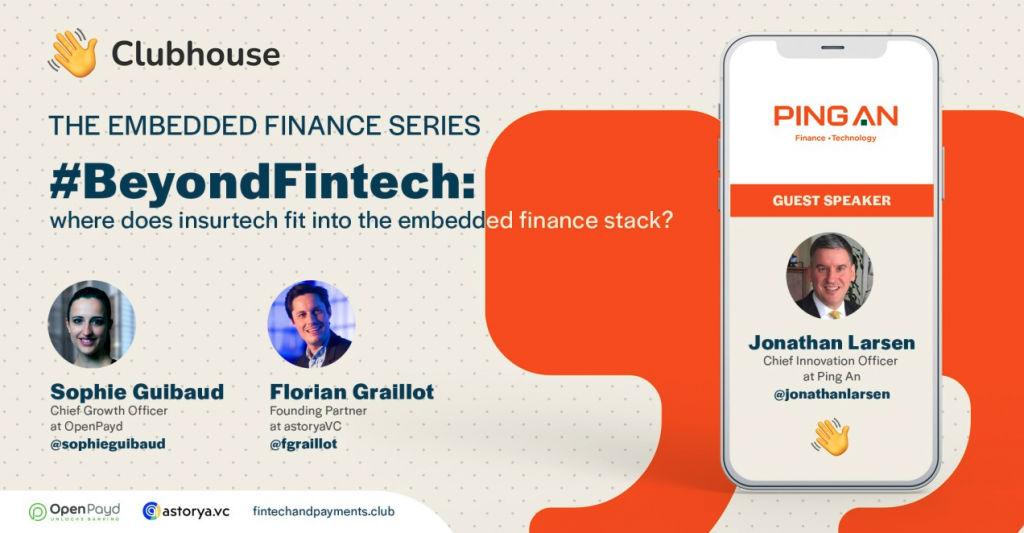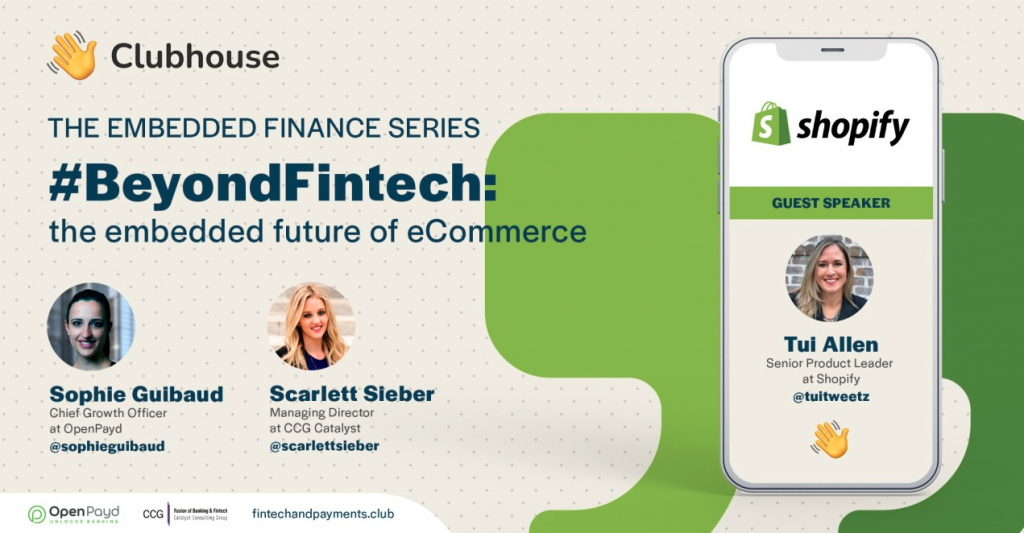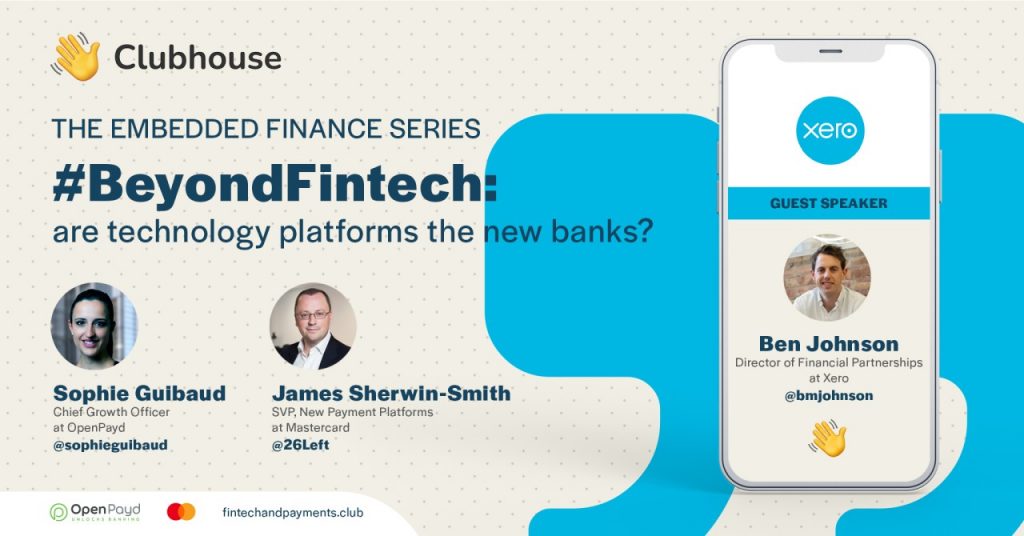Recently, it was a huge privilege to be able to welcome a major fintech influencer to the Fintech & Payments Club when Spiros Margaris joined us for a Clubhouse discussion.
Spiros is a venture capitalist, futurist, keynote speaker and senior advisor who has achieved “The Triple Crown” ranking of No.1 international FinTech, Blockchain and Artificial Intelligence (AI) influencer with Onalytica. I was joined in this discussion about how fintech has developed and where it is going in the future by my co-moderator Darren Franks, the Founder & CEO of TalentintheCloud.
If you weren’t able to join the conversation, here are the main topics we covered and the key learnings I took from it.
There’s much more to come from fintech
So far, fintech has picked all the low hanging fruit in terms of innovation that incumbents should have really done themselves. That is not to say that fintech companies haven’t broken new ground or achieved important things but more that we are still at the beginning of what can be achieved.
The most progress has been made in improving the customer experience across banking, payments and financial services in general. Fintech shook up the industry by providing opportunities to the masses that had previously been reserved for the privileged few. All of a sudden, services like sending money to relatives cheaply were opened up to ordinary people.
The fact that fintech has progressed so much can be seen in how little fanfare comes with the announcement of a new challenger bank or robo advisor. This doesn’t mean that fintech will not have any more ‘TikTok’ moments, where something unexpectedly huge appears from nowhere. These will come and the key will be cooking up the right blend of technologies to provide customers with what they want.
Embedded finance will win the fintech wars
In all likelihood, it will be a company that isn’t an established provider of financial services that will win the fintech wars and they will do so by using embedded finance to offer services that satisfy customer needs.
Identifying exactly who that will be is hard. Without doubt, the tech giants and the biggest mobile network operators will take some of the market from the banks, who will likely be the biggest losers in whatever new market structure emerges. Banks will be less visible and less powerful but they will still provide the pipes behind the scenes.
Unfortunately, this will mean many thousands of jobs are lost in banking and it will not be the career choice that young people aspire to, as they have for many years. The big banks know this too and are aware that many other players, including fintechs, are in the driving seat now.
Essentially, this major change boils down to the fact that people will care less and less where their finance comes from. Like with an iphone, where you don’t understand the complexity in the computer but you do understand that it gives you what you need, the same will happen with mortgages, loans and other financial services.
Banks must be brave to not lose out
Fundamentally, banks must be courageous in their approach and be ready to cannibalise their own business. The faster they do, the faster they will win. In fact, if they had done this earlier in certain areas, there would have been no space for fintech to move into.
Having courage to fail is important. Some banks are too scared to progress in this way because they do not want to bet the bank on these initiatives. However, they must at least be ready and willing to try and possibly fail.
Goldman Sachs is an example of a bank that is being brave right now by building its Banking as a Service offer. It’s a slightly unique case because it is starting from scratch but there are still many opportunities in Banking as a Service and Embedded Finance which other banks are failing to seize.
Just getting started can have a major impact and the future may look very scary for them if they don’t. Just look at how much progress Shopify or Grab have made recently. Two years ago, they were nowhere in financial services but now it is bigger for Grab than delivery and restaurants.
Regulators will always have a big part to play
Regulation should always focus on protecting the consumer but, if you overregulate, you may kill fintech innovation.
Failure happens but, as the Singaporean regulators have said in the past, you have to have room for failure. A clear example of where regulators have helped fintech is the UK, which has developed into a great hub because it allowed startups to flourish. If you overregulate, these companies just move elsewhere.
China is an interesting case study for regulation. Right now, they seem to be saying that there has been enough financial services innovation for now and that what has happened so far needs time to be digested. This seems like it might be a dangerous move.
If the regulators take away the innovation powers of people like Jack Ma from Alibaba it seems inevitable that the industry won’t advance in the future as it has up to now. We’ll just have to wait and see if China proves this wrong though.
Trust matters but so do great services
You can’t grow if you don’t have a brand that people can connect to emotionally. That’s because branding is all about trust and credibility rather than advertising and marketing. Furthermore, trust really boils down to providing great services that consumers need.
If you think of a company like Amazon, many people might be able to identify some ethical issue they have about privacy or workers rights. However, the same people will still buy from Amazon because it is providing a great service and they simply don’t care enough about the other things. The solution the company provides is the main thing and, with the finance of the future, this will be all about who can supply the loan or other product that fulfills the consumer’s dream.
When it comes to how this plays out with Gen Z consumers, it seems highly likely that a fintech rather than a traditional bank will serve their needs best. The big banks may follow but they simply aren’t agile enough to take advantage right now.
Want to follow more discussions like those?
1.Visit the Fintech & Payments club website to be informed of daily events. The Fintech & Payments club comprises 30,000 members and followers on Clubhouse, growing every day. We run events every day on a variety of Fintech topics!
2. Follow me on Linkedin for new updates and live session write-ups.
3. Subscribe to my substack to follow my new series Beyond Fintech, exploring how Brands leverage Fintech to unlock new growth opportunities.





